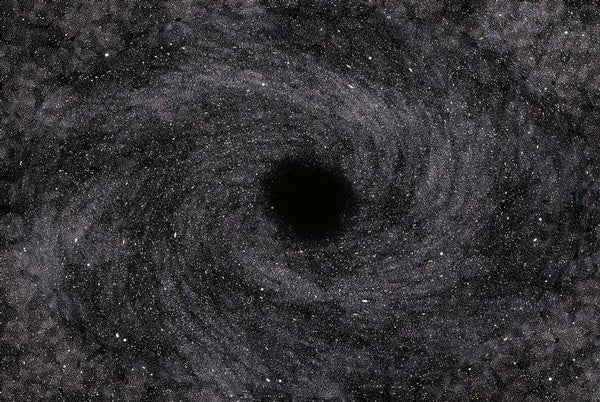How Can Equations of General Relativity Reconcile with Colliding Black Holes

Both Albert Einstein’s General Relativity and colliding black holes are not concepts to grasp by anybody, and even great scientists from nowadays struggle to reconcile them. General Relativity is a treasure for science, as it predicted the existence of black holes about a century ago. Furthermore, Einstein’s work even supports the part of the Big Bang Theory that all matter, time, and space once began from a singularity that had infinite energy.
A team of scientists from the Rochester Institute of Technology (RIT) wanted to find out how to solve the equations of General Relativity for colliding black holes, and they performed for the first time a simulation of large mass ratio black hole merger.
Observation of gravitational waves before a numerical solution?
Even since about two decades ago, Kip Thorne, a Nobel Laureate and one of the designers of LIGO (Laser Interferometer Gravitational-Wave Observatory), thought that there would be an observation of gravitational waves before reaching a numerical solution.
The claim turned out to be false, as a scientific team generated in 2005 a solution using the Lonestar supercomputer from the Texas Advanced Computing Center. But in 2015, the Laser Interferometer Gravitational-Wave Observatory (LIGO) observed such gravitational waves for the first time.
Carlos Lousto, who is a professor of mathematics at Rochester Institute of Technology (RIT), declared:
“It took us two weeks to realize this was really from nature and not from inputting our simulation as a test,
“The comparison with our simulations was so obvious. You could see with your bare eyes that it was the merger of two black holes.”
Lousto was also able to simulate merging black holes by using the Frontera supercomputer at TACC.
Pedro Marronetti, a program director for gravitational physics at NSF, spoke about the importance of the simulation:
“The RIT group has performed the world’s most advanced simulations in this area, and each of them takes us closer to understanding observations that gravitational-wave detectors will provide in the near future.”
The new work of Carlos Lousto via the Frontera supercomputer was published in Physical Review Letters, and experimental studies are required to confirm the results.
Source: scitechdaily.com
0 comments